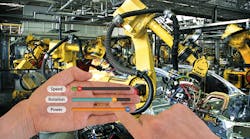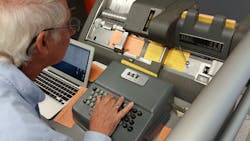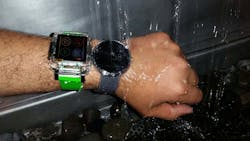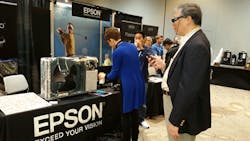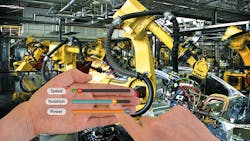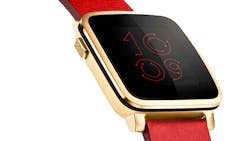I finally had a chance to visit the Wearables TechCon show in Santa Clara, and it was well worth the trip. The event provided an interesting mix of hacker hints and marketing messages for wearable technology.
I also had a chance to visit the Computer History Museum, where I saw a lot of old hardware like the IBM 026 card punch (Fig. 1). I personally have used many of the items featured, although I was disappointed that there was not more Burroughs equipment on display.
The trip to the Computer History Museum provided useful contrast from the mostly non-wearable technology of years past to the tiny technology found at Wearables TechCon. There were plenty of wire-wrapped systems to be found (I still have my wire-wrap tools and a few boards), as well as core memories. There were even a few S-100 systems. It was fun to see how computers have moved from building and room size monstrosities to minicomputers and finally micros.
Wearable technology is not only cutting edge, but also small—and low power is critical (see “Wearing Your Technology”). This is pushing the technology in ways ranging from better input to interesting product combinations.
One interesting booth at the show belonged to UICO. On display was the firm’s ICap DuraTouch, which works in rugged, everyday environments (Fig. 2). It has many of the benefits of resistive touch and its waterSENSE technology, like being able to work with gloves and in wet conditions. It can also handle thick glass and temperature extremes.
UICO’s DuraTouch Touchscreen provides gesture recognition support. The DuraTouch Surface can conform to curved surfaces.
Google Glass may be back in development, but that has not stopped other glass-related technology from flourishing. Sony had a pair of augmented reality (AR) glasses, as did Epson. I tried out Epson’s Moverio BT-200 glasses running software from Metio (Fig. 3). The BT-200 also has a built-in camera.
Metaio’s AR software and SDK works with a number of AR glasses like Epson’s. It uses the camera to recognize objects so the software can map information and images over the object. This can be useful for maintenance and diagnostic applications. The example I saw was showing the removal of the fan. The fan in front of me had a graphical version overlaid that was then moved to show how it would be removed.
The Epson glasses are attached to a wired smartphone-size unit with the electronics and battery. It also has buttons.
Another company utilizing the Epson glasses was Augumenta. It provides a virtual interface that you can see using the AR glasses. The interface uses the camera to recognize where one of your hands is within the viewing area. It then maps the controls over your hand (Fig. 4).
The usual alternative is an external button control like the Epson’s controller or to use gestures. The former requires additional hardware that has to be handled by the user. Gestures eliminate this, but gestures tend to be challenging and cryptic—especially when multiple controls or operations are involved.
Augumenta’s approach provides gesture advantage while providing a more natural interface. It also makes hand positioning more natural. It can display different control types like buttons and sliders.
There was plenty of other wearable technology at the show. Freescale may be part of NXP soon, but its chips were in the WaRPboard.org reference platform (Fig. 5). I wrote about the WaRP when the module was first announced (see “It Takes A WaRPed Mind To Design Wearable Tech “). The latest incarnation is more polished, featuring more hardware and software support.
There was a lot of wearable-related technology on display, as well. P2i has a nano-coating technology designed to repel liquids. It also is clear, making it invisible on devices like smartphones or smartwatches. Flexible Circuit Technologies had an array of their flexible circuit on display. The flexible approach allows more compact devices as well as allowing more interesting product designs.
Engineered Material Systems (EMS) has conductive inks and printed electronic technologies that can be quite useful in wearable designs. Their product suite includes biosensors and membrane switches.
Development tools were also part of the mix. Pebble was highlighting its SDK, which works with a range of products including its latest, Pebble Time Steel (Fig. 6). The new smartwatch has a color e-paper screen. In spite of a lack of streaming video, its low-power operation allows it to best LCD displays while still providing color images.
MediaTek Labs also had a booth at the show. MediaTek is one of the larger semiconductor vendors, but much of its output targets large companies, while a lot of the new wearable startups are on the small side. MediaTek Labs looks to address emerging companies that could take advantage of MediaTek technology. Of course, wearables represents a key target for the labs.
Finally, a quick mention of DfR Solution’s Sherlock, which I’ll hopefully have more on in the future. Sherlock is an automated design analyzer that takes a system design model, along with environmental specifications, and then generates information about product lifetime estimates and failure issues. It uses a Physics of Failure (PoF) analysis that DfR Solution’s has developed.
